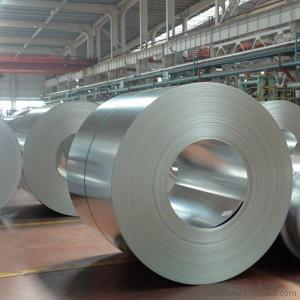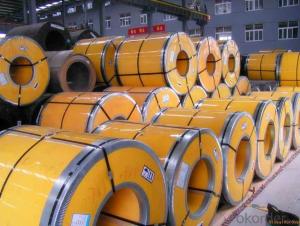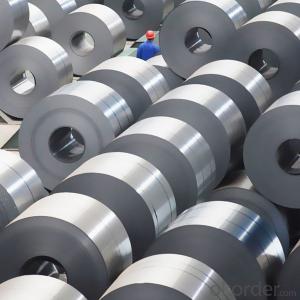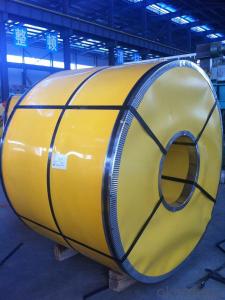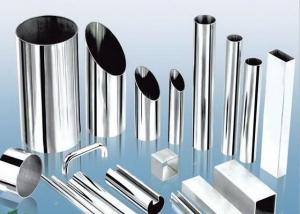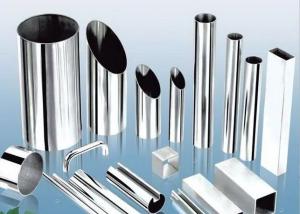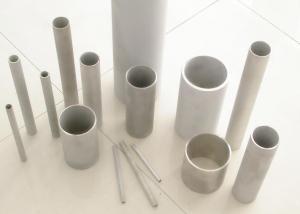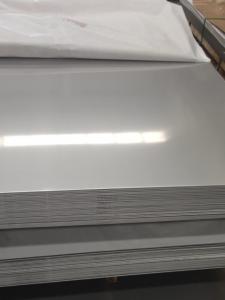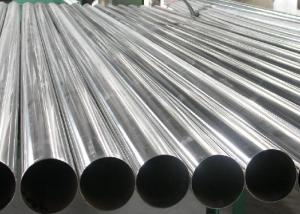Cold Rolled Stainless Steel NO.2B Finish Grade 304L
- Loading Port:
- Guangzhou
- Payment Terms:
- TT OR LC
- Min Order Qty:
- 22 m.t.
- Supply Capability:
- 2000000 m.t./month
OKorder Service Pledge
OKorder Financial Service
You Might Also Like
Specification
Products Description for Stainless Steel Coils/Sheets:
Product | stainless steel coils/plates/sheets | ||
Discharge Port | Any Port, China | ||
Size | Coils | Cold Rolled: | Thickness0.3-8mm,Width:280-2100mm |
Hot Rolled : | Thickness3-14mm,Width:650-2100mm | ||
Plates | Thickness2-80mm,Width:1500-3000mm | ||
Coil Weight | About 20 Tons | ||
Grade | 201,202,304/304L/304H,316/316L/316H,321/H,310S,409/L,430 etc. | ||
Technique | Hot Rolled/Cold Rolled | ||
Finish | 2B, BA, 2D, No1, No2, No4,NO.8,SB etc | ||
Edge | Mill Edge / Slitting Edge | ||
Package | In bundles, or as customer's requirement | ||
Place of Origin | Made in China | ||
MOQ | 20 Tons | ||
Features of Stainless Steel Coils
(1)Good ductility
(2)Good corrosion resistance
(3)Excellent abrasion resistance and fatigue strength
(4)Good weldability
(5)Oxidation resistant performance
(6)Excellent in high temperature
Detail picture for Stainless Steel Coils/Sheet
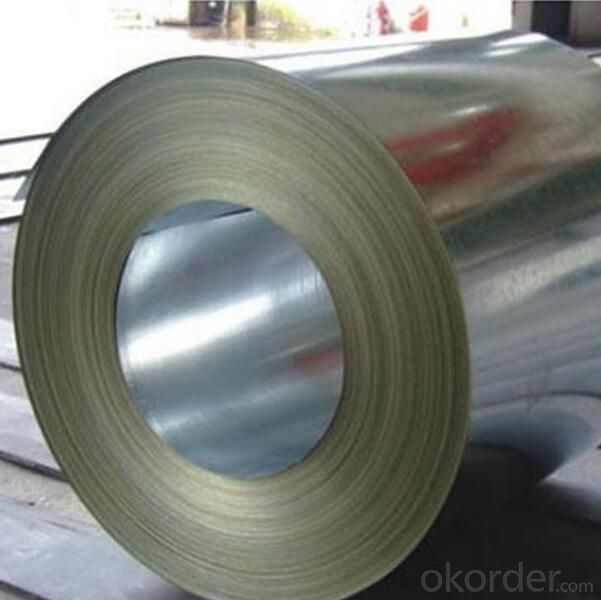
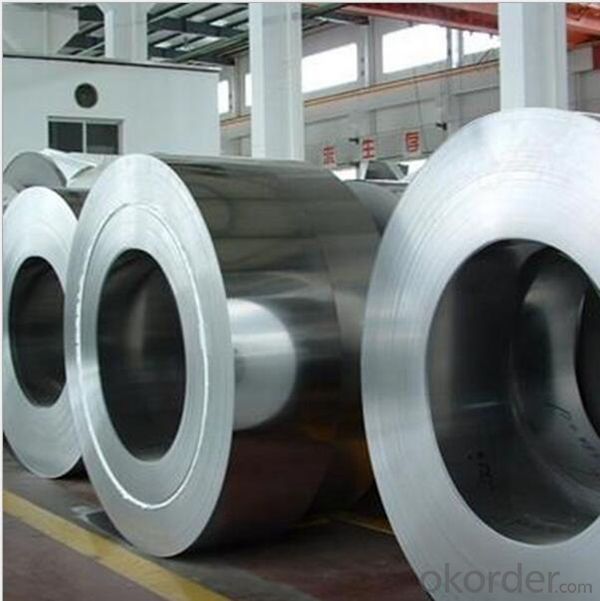
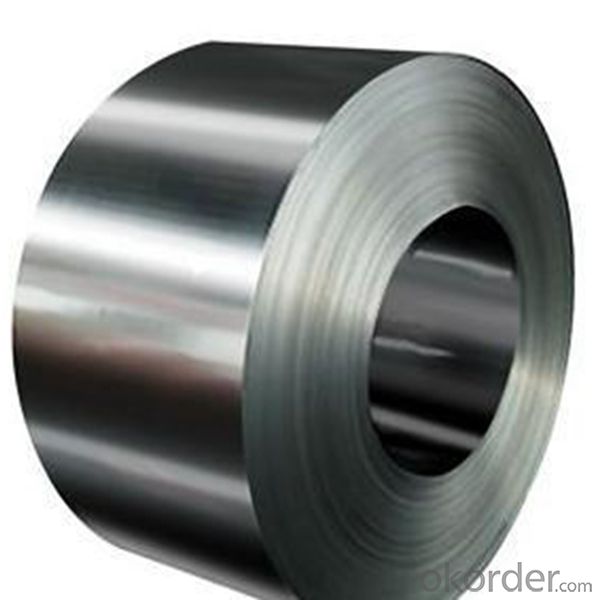

Payment&Delivery for Stainless Steel Coils/Sheets:
Payment Terms | 100% LC at sight,or 30%TT in advance, balance against B/L copy |
Delivery Time | With 30-40 days after deposit |
Price Terms | Ex-Work, FOB, CNF, CFR, CIF,etc |
Export Markets for Stainless Steel Coils/Sheets:
Our target market is the international market. Every year we export most of products to countries like India, Pakistan, South Korea, Brazil, Australia, South Africa, Spain, Sri Lanka, Taiwan, Hong Kong, etc.
FAQ for Stainless Steel Coils/Sheets:
Q: How long is the delivery time?
A: Normally 30-40 days, but mostly according to the specific requirements or the quantity
Q: Could you send me sample?
A: We can supply you with the sample for free, but the delivery charges will be covered by customers.
- Q: Are stainless steel sheets resistant to pitting?
- Yes, stainless steel sheets are resistant to pitting. Stainless steel is known for its excellent corrosion resistance, and this includes resistance to pitting corrosion. Pitting corrosion is a localized form of corrosion that leads to the formation of small pits or holes on the surface of metal. However, stainless steel contains chromium, which forms a passive oxide layer on the surface, preventing the metal from further corrosion. This oxide layer acts as a barrier and protects the stainless steel from pitting. Additionally, the composition and specific grade of stainless steel can further enhance its resistance to pitting, making stainless steel sheets a reliable choice for various applications where corrosion resistance is crucial.
- Q: Can stainless steel sheets be used for airport terminals?
- Yes, stainless steel sheets can be used for airport terminals. Stainless steel is a highly versatile material that offers several advantages for use in airport terminals. Firstly, stainless steel is corrosion-resistant, which is essential in a high-traffic environment like an airport where exposure to moisture and chemicals is common. This property ensures that the stainless steel sheets will maintain their structural integrity and appearance over time. Additionally, stainless steel sheets are durable and can withstand heavy foot traffic and the wear and tear associated with airport operations. This makes them suitable for various applications within the terminal, including walls, ceilings, cladding, countertops, and furniture. Stainless steel is also easy to clean and maintain, making it a hygienic choice for high-traffic areas like airport terminals. Furthermore, stainless steel has an aesthetic appeal that can enhance the overall design of the airport terminal. Its sleek and modern look can create a sense of sophistication and elegance. Stainless steel sheets are available in various finishes, such as brushed, polished, or patterned, allowing for customization to suit the desired aesthetic requirements of the terminal. Overall, stainless steel sheets are a practical and visually appealing choice for airport terminals due to their corrosion resistance, durability, ease of maintenance, and aesthetic versatility.
- Q: Can stainless steel sheets be used for insulation?
- No, stainless steel sheets cannot be used for insulation. Stainless steel is a good conductor of heat and electricity, so it would not provide adequate insulation.
- Q: What is the maximum temperature stainless steel sheets can withstand?
- The maximum temperature stainless steel sheets can withstand depends on the specific grade of stainless steel. Generally, most stainless steel grades can withstand temperatures up to around 1500°F (815°C) before experiencing significant oxidation or scaling. However, certain high-temperature grades of stainless steel, such as 310 or 321, can withstand temperatures up to 2100°F (1150°C) or even higher. It is important to consider the specific application and grade of stainless steel when determining the maximum temperature it can withstand to ensure optimal performance and durability.
- Q: Advantages and disadvantages of stainless steel
- Mechanical properties: according to different types of stainless steel, the mechanical properties of different martensitic stainless steel with high strength, hardness, corrosion resistance and is suitable for manufacturing the need of high strength, high wear resistance parts, such as turbine shaft, stainless steel knives, stainless steel bearings, austenitic stainless steel and good plasticity, strength is not too but the high corrosion resistance of stainless steel is the best, very suitable for corrosion resistance and mechanical properties of less demanding situations, such as chemical plants, fertilizer plants, sulfuric acid, hydrochloric acid manufacturers of equipment materials, of course, can also be used for submarines and other military industries, ferrite medium mechanical properties of stainless steel body, but the intensity is not too high. Oxidation resistance, suitable for various industrial furnace parts.
- Q: What is the cost of stainless steel sheets?
- The cost of stainless steel sheets can vary depending on several factors such as the thickness, size, and grade of stainless steel being used. Generally, stainless steel sheets are priced per square foot or per square meter. The price range can also depend on the supplier, location, and market conditions. Additionally, any additional processing or finishing required, such as polishing or cutting, can also affect the cost. It is recommended to contact a local supplier or distributor to get accurate and up-to-date pricing information for stainless steel sheets.
- Q: How are stainless steel sheets made?
- Stainless steel sheets undergo a process called hot rolling to be produced. This starts by melting iron, nickel, chromium, and other elements in an electric arc furnace. The resulting mixture is then cast into large rectangular blocks known as slabs. The slabs are subjected to high temperatures and passed through a series of hot rolling mills. These mills consist of large rollers that gradually decrease the slab's thickness while increasing its length and width. As the slab goes through each rolling mill, it is constantly squeezed by the rollers, resulting in a thinner and longer sheet. Following the hot rolling process, the stainless steel sheet goes through annealing. This involves heating the sheet to a specific temperature and then allowing it to cool slowly. This process helps release internal stresses and enhance the material's mechanical properties. Next comes pickling, where the sheet is submerged in an acid solution to eliminate any surface impurities and oxides. This improves the appearance and corrosion resistance of the stainless steel. Once the pickling process is done, the sheet undergoes cold rolling. Cold rolling further decreases the sheet's thickness and improves its surface finish. This is done at room temperature, increasing the hardness and strength of the stainless steel. Lastly, the stainless steel sheet undergoes various finishing processes. These may include cutting to size, leveling, surface polishing, and coating to enhance appearance or protect against corrosion. In conclusion, the manufacturing process of stainless steel sheets involves a combination of melting, casting, hot rolling, annealing, pickling, cold rolling, and finishing processes. This ensures that the final product meets the desired specifications in terms of thickness, strength, and surface finish.
- Q: Can stainless steel sheets be used for solar panels?
- Yes, stainless steel sheets can be used for solar panels. Stainless steel is a durable and corrosion-resistant material that can protect the solar panels from environmental conditions. It is commonly used as a backing material or frame for solar panels due to its strength and longevity.
- Q: Are stainless steel sheets resistant to staining?
- Stainless steel sheets possess a remarkable resistance to staining due to their high chromium content. This abundance of chromium creates a protective layer on the metal's surface, referred to as the passive layer, which effectively prevents the steel from interacting with oxygen and moisture in the surroundings. Consequently, stainless steel becomes immune to rust and corrosion. Moreover, the smooth and non-porous nature of stainless steel surfaces makes it challenging for stains to infiltrate and cling onto the material. Although stainless steel sheets may eventually exhibit some signs of staining, they can be effortlessly cleaned and restored to their original condition with minimal exertion. Consequently, stainless steel sheets are widely favored in various settings, including kitchens, hospitals, and industrial environments, where stain resistance is of utmost importance.
- Q: What are the different types of perforations available for stainless steel sheets?
- There are several different types of perforations available for stainless steel sheets, each serving a specific purpose and offering unique characteristics. Here are some of the most common types: 1. Round Perforations: These are the most basic and widely used type of perforations. They consist of evenly spaced round holes punched through the stainless steel sheet. Round perforations offer good airflow and visibility while providing adequate strength and durability. 2. Square Perforations: Similar to round perforations, square perforations feature evenly spaced square holes instead of round ones. Square perforations are often preferred when a more geometric and modern aesthetic is desired, as they can create a visually appealing pattern. 3. Slotted Perforations: Slotted perforations are characterized by elongated, rectangular holes that are punched through the stainless steel sheet. This type of perforation allows for better drainage and airflow, making it suitable for applications such as grilles, screens, and filters. 4. Hexagonal Perforations: Hexagonal perforations feature hexagon-shaped holes that are punched through the stainless steel sheet. This type of perforation offers an interesting visual pattern and can provide better strength and rigidity compared to round or square perforations. 5. Decorative Perforations: These perforations are specifically designed to enhance the aesthetic appeal of stainless steel sheets. They can come in various shapes, sizes, and patterns, including floral, geometric, or custom designs. Decorative perforations are often used in architectural applications, interior design, and decorative panels. 6. Micro Perforations: Micro perforations are extremely small holes that are closely spaced in the stainless steel sheet. They are commonly used in applications where a high level of precision and fine filtering is required, such as speaker grilles, ventilation systems, or sieves. It's important to note that the availability of specific perforation types may vary depending on the supplier or manufacturer. Additionally, some suppliers may offer custom perforation options to meet unique requirements or design preferences.
Send your message to us
Cold Rolled Stainless Steel NO.2B Finish Grade 304L
- Loading Port:
- Guangzhou
- Payment Terms:
- TT OR LC
- Min Order Qty:
- 22 m.t.
- Supply Capability:
- 2000000 m.t./month
OKorder Service Pledge
OKorder Financial Service
Similar products
Hot products
Hot Searches
Related keywords
